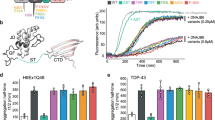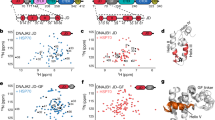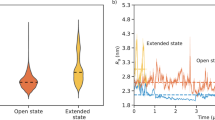Abstract
The J-domain proteins (JDPs), or HSP40s, are essential molecular co-chaperones that, in concert with HSP70, play a pivotal role in maintaining protein homeostasis, which is particularly critical in skeletal muscle. In recent years, pathogenic variants in several JDP-encoding genes have been identified as a cause of a growing group of inherited muscle diseases, termed JDP-related myopathies. This review provides a comprehensive overview of the current understanding of the molecular genetics, clinical phenotypes, muscle pathology, and pathomechanisms of myopathies caused by mutations in DNAJB6, DNAJB4, and DNAJB2. These disorders present with a wide spectrum of clinical features, including limb-girdle or distal weakness, and, in some cases, severe early-onset respiratory failure with axial rigidity. Pathologically, they are often characterized by rimmed vacuoles and sarcoplasmic protein inclusions. The underlying molecular mechanisms all involve disruption of the JDP-HSP70 chaperone system, but they are driven by distinct molecular events specific to each gene and mutation type. While loss-of-function is a primary mechanism for recessive forms of DNAJB4 and DNAJB2 myopathy, a toxic gain-of-function mediated by a dysregulated interaction with HSP70 is emerging as a central pathomechanism for dominant myopathies caused by DNAJB6 and DNAJB4 variants. A dominant-negative effect is proposed for dominant DNAJB2 neuromyopathy. This evolving mechanistic understanding is crucial as it informs the development of targeted therapeutic strategies, moving beyond supportive care. Potential future therapies include gene replacement for loss-of-function disorders, and for gain-of-function diseases, approaches including small molecule inhibitors of the JDP-HSP70 interaction or allele- and isoform-specific knockdown.
This is a preview of subscription content, access via your institution
Access options
Subscribe to this journal
Receive 12 print issues and online access
$259.00 per year
only $21.58 per issue
Buy this article
- Purchase on SpringerLink
- Instant access to full article PDF
Prices may be subject to local taxes which are calculated during checkout


Similar content being viewed by others
References
Kampinga HH, Andreasson C, Barducci A, Cheetham ME, Cyr D, Emanuelsson C, et al. Function, evolution, and structure of J-domain proteins. Cell Stress Chaperones. 2019;24:7–15.
Sarparanta J, Jonson PH, Kawan S, Udd B. Neuromuscular diseases due to chaperone mutations: a review and some new results. Int J Mol Sci. 2020;21:1409.
Höhfeld J, Benzing T, Bloch W, Fürst DO, Gehlert S, Hesse M, et al. Maintaining proteostasis under mechanical stress. EMBO Rep. 2021;22:EMBR202152507.
Acquarone D, Bertero A, Brancaccio M, Sorge M. Chaperone proteins: the rising players in muscle atrophy. J Cachexia Sarcopenia Muscle. 2025;16:13659.
Bell RAV, Al-Khalaf M, Megeney LA. The beneficial role of proteolysis in skeletal muscle growth and stress adaptation. Skelet Muscle. 2016;6:16.
Harms MB, Sommerville RB, Allred P, Bell S, Ma D, Cooper P, et al. Exome sequencing reveals DNAJB6 mutations in dominantly-inherited myopathy. Ann Neurol. 2012;71:407–16.
Sarparanta J, Jonson PH, Golzio C, Sandell S, Luque H, Screen M, et al. Mutations affecting the cytoplasmic functions of the co-chaperone DNAJB6 cause limb-girdle muscular dystrophy. Nat Genet. 2012;44:450–5.
Weihl CC, Udd B, Hanna M, ENMC Workshop Study Group. 234th ENMC International Workshop: chaperone dysfunction in muscle disease Naarden, The Netherlands, 8–10 December 2017. Neuromuscul Disord. 2018;28:1022–30.
Rosenzweig R, Nillegoda NB, Mayer MP, Bukau B. The Hsp70 chaperone network. Nat Rev Mol Cell Biol. 2019;20:665–80.
Gonzaga-Jauregui C, Harel T, Gambin T, Kousi M, Griffin LB, Francescatto L, et al. Exome sequence analysis suggests that genetic burden contributes to phenotypic variability and complex neuropathy. Cell Rep. 2015;12:1169–83.
Ruggieri A, Brancati F, Zanotti S, Maggi L, Pasanisi MB, Saredi S, et al. Complete loss of the DNAJB6 G/F domain and novel missense mutations cause distal-onset DNAJB6 myopathy. Acta Neuropathol Commun. 2015;3:44.
Ruggieri A, Saredi S, Zanotti S, Pasanisi MB, Maggi L, Mora M. DNAJB6 myopathies: focused review on an emerging and expanding group of myopathies. Front Mol Biosci. 2016;3:63.
Sato T, Hayashi YK, Oya Y, Kondo T, Sugie K, Kaneda D, et al. DNAJB6 myopathy in an Asian cohort and cytoplasmic/nuclear inclusions. Neuromuscul Disord. 2013;23:269–76.
Nam TS, Li W, Heo SH, Lee KH, Cho A, Shin JH, et al. A novel mutation in DNAJB6, p.(Phe91Leu), in childhood-onset LGMD1D with a severe phenotype. Neuromuscul Disord. 2015;25:843–51.
Nallamilli BRR, Chakravorty S, Kesari A, Tanner A, Ankala A, Schneider T, et al. Genetic landscape and novel disease mechanisms from a large LGMD cohort of 4656 patients. Ann Clin Transl Neurol. 2018;5:1574–87.
Jonson PH, Palmio J, Johari M, Penttilä S, Evilä A, Nelson I, et al. Novel mutations in DNAJB6 cause LGMD1D and distal myopathy in French families. Eur J Neurol. 2018;25:790–4.
Ji G, Wang N, Han X, Wang Y, Zhang J, Wu Y, et al. Case Report: A novel splice-site mutation in DNAJB6 associated with juvenile-onset proximal–distal myopathy in a Chinese patient. Front Genet. 2022;13:925926.
Wang Q, Sun P, Yu M, Xie Z, Yu J, Liu X, et al. Mutational and clinical spectrum of myofibrillar myopathy in one center from China. J Neuromuscul Dis. 2024;11:1247–59.
Palmio J, Jonson PH, Inoue M, Sarparanta J, Bengoechea R, Savarese M, et al. Mutations in the J domain of DNAJB6 cause dominant distal myopathy. Neuromuscul Disord. 2020;30:38–46.
Qian F-Y, Guo YD, Zu J, Zhang JH, Zheng YM, Abdoulaye IA, et al. A novel recessive mutation affecting DNAJB6a causes myofibrillar myopathy. Acta Neuropathol Commun. 2021;9:23.
Findlay AR, Robinson SE, Poelker S, Seiffert M, Bengoechea R, Weihl CC. LGMDD1 natural history and phenotypic spectrum: Implications for clinical trials. Ann Clin Transl Neurol. 2022;10:181–94.
Sandell S, Huovinen S, Palmio J, Raheem O, Lindfors M, Zhao F, et al. Diagnostically important muscle pathology in DNAJB6 mutated LGMD1D. Acta Neuropathol Commun. 2016;4:9.
Weihl CC, Töpf A, Bengoechea R, Duff J, Charlton R, Garcia SK, et al. Loss of function variants in DNAJB4 cause a myopathy with early respiratory failure. Acta Neuropathol. 2023;145:127–43.
Inoue M, Jayaraman D, Bengoechea R, Bhadra A, Genetti CA, Aldeeri AA, et al. Genotype‒phenotype correlation in recessive DNAJB4 myopathy. Acta Neuropathol Commun. 2024;12:171.
Inoue M, Noguchi S, Inoue YU, Iida A, Ogawa M, Bengoechea R, et al. Distinctive chaperonopathy in skeletal muscle associated with the dominant variant in DNAJB4. Acta Neuropathol. 2022;145:235–55.
Liu M, Xu Y, Hong D, Cong L, Fan Y, Zhang J. DNAJB2 c.184C>T mutation associated with distal hereditary motor neuropathy with rimmed vacuolar myopathy. Clin Neuropathol. 2022;41:226–32.
Sarparanta J, Jonson PH, Reimann J, Vihola A, Luque H, Penttilä S, et al. Extension of the DNAJB2a isoform in a dominant neuromyopathy family. Hum Mol Genet. 2023;32:3029–39.
Abayev-Avraham M, Salzberg Y, Gliksberg D, Oren-Suissa M, Rosenzweig R. DNAJB6 mutants display toxic gain of function through unregulated interaction with Hsp70 chaperones. Nat Commun. 2023;14:7066.
Stein KC, Bengoechea R, Harms MB, Weihl CC, True HL. Myopathy-causing mutations in an HSP40 chaperone disrupt processing of specific client conformers*. J Biol Chem. 2014;289:21120–30.
Bhadra AK, Rau MJ, Daw JA, Fitzpatrick JAJ, Weihl CC, True HL. Disease-associated mutations within the yeast DNAJB6 homolog Sis1 slow conformer-specific substrate processing and can be corrected by the modulation of nucleotide exchange factors. Nat Commun. 2022;13:4570.
Bengoechea R, Findlay AR, Bhadra AK, Shao H, Stein KC, Pittman SK, et al. Inhibition of DNAJ-HSP70 interaction improves strength in muscular dystrophy. J Clin Investig. 2020;130:4470–85.
Arndt V, Dick N, Tawo R, Dreiseidler M, Wenzel D, Hesse M, et al. Chaperone-assisted selective autophagy is essential for muscle maintenance. Curr Biol. 2010;20:143–8.
Findlay AR, Paing MM, Daw JA, Haller M, Bengoechea R, Pittman SK, et al. DNAJB6 isoform specific knockdown: therapeutic potential for limb girdle muscular dystrophy D1. Mol Ther Nucleic Acids. 2023;32:937–48.
Bengoechea R, Pittman SK, Tuck EP, True HL, Weihl CC. Myofibrillar disruption and RNA-binding protein aggregation in a mouse model of limb-girdle muscular dystrophy 1D. Hum Mol Genet. 2015;24:6588–602.
Machado PM, McDermott MP, Blaettler T, Sundgreen C, Amato AA, Ciafaloni E, et al. Safety and efficacy of arimoclomol for inclusion body myositis: a multicentre, randomised, double-blind, placebo-controlled trial. Lancet Neurol. 2023;22:900–11.
Findlay AR. Dominantly inherited muscle disorders: understanding their complexity and exploring therapeutic approaches. Dis Model Mech. 2024;17:dmm050720.
Inoue M, Weihl CC. Myofibrillar myopathy: towards a mechanism-based definition as a Z-disk-opathy. Curr Opin Neurol. 2025; https://doi.org/10.1097/wco.0000000000001397.
Liu J, Wallace LM, Garwick-Coppens SE, Sloboda DD, Davis CS, Hakim CH, et al. RNAi-mediated gene silencing of mutant myotilin improves myopathy in LGMD1A mice. Mol Ther Nucleic Acids. 2014;3:e160.
Bartoszewski R, Sikorski AF. Editorial focus: understanding off-target effects as the key to successful RNAi therapy. Cell Mol Biol Lett. 2019;24:69.
Crudele JM, Chamberlain JS. AAV-based gene therapies for the muscular dystrophies. Hum Mol Genet. 2019;28:R102–7.
Acknowledgements
I thank Dr. Conrad C. Weihl for his critical review of the manuscript and valuable feedback. I also thank Dr. Aurelio Hernández Lain for kindly providing the images used in Fig. 2C, D.
Funding
This work was supported in part by K99AR084062 from the National Institute of Arthritis and Musculoskeletal and Skin Diseases.
Author information
Authors and Affiliations
Corresponding author
Ethics declarations
Competing interests
The author declares no competing interests.
Additional information
Publisher’s note Springer Nature remains neutral with regard to jurisdictional claims in published maps and institutional affiliations.
Rights and permissions
Springer Nature or its licensor (e.g. a society or other partner) holds exclusive rights to this article under a publishing agreement with the author(s) or other rightsholder(s); author self-archiving of the accepted manuscript version of this article is solely governed by the terms of such publishing agreement and applicable law.
About this article
Cite this article
Inoue, M. Molecular genetics of J-domain protein-related chaperonopathies in skeletal muscle. J Hum Genet (2025). https://doi.org/10.1038/s10038-025-01372-8
Received:
Revised:
Accepted:
Published:
DOI: https://doi.org/10.1038/s10038-025-01372-8



